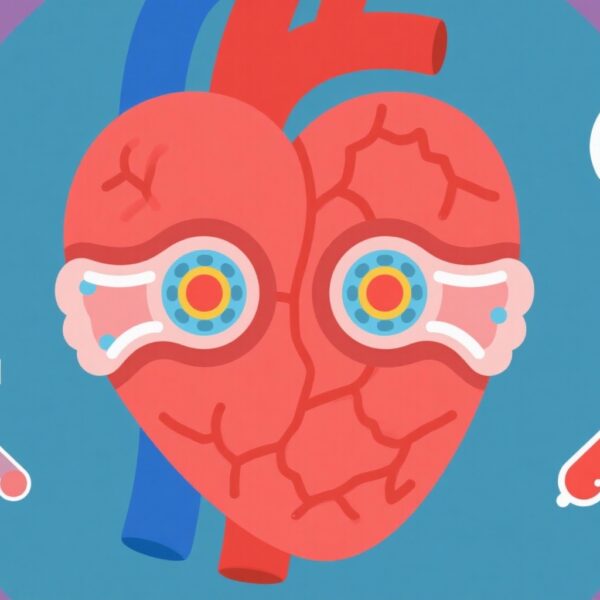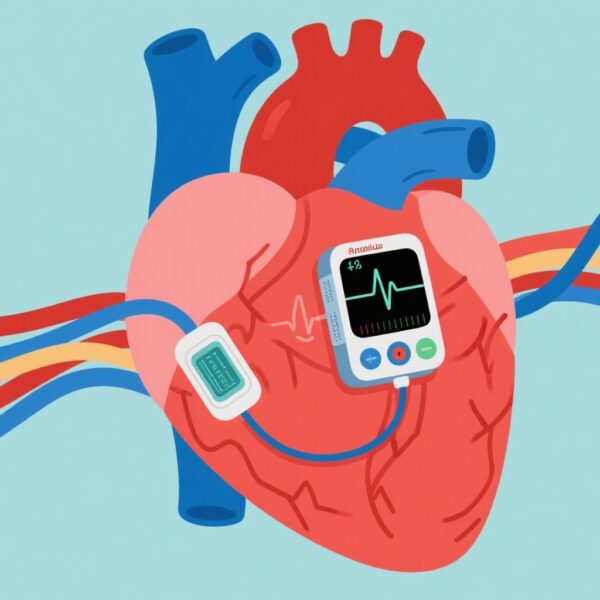Highlight
– Pathogenic variants (PVs) in genes such as BRCA1, BRCA2, PALB2, ATM, and CHEK2 significantly increase breast cancer risk.
– Family history modulates the risk conferred by PVs, especially for BRCA1 and PALB2.
– Cumulative breast cancer risk by age 80 years varies widely, reaching over 70% for PALB2 PV carriers with a family history.
– Risk estimates differ across racial and ethnic groups, and by modifiable epidemiologic factors, underscoring the need for individualized assessment.
Study Background
Breast cancer remains the most frequently diagnosed cancer among US women and a leading cause of cancer-related mortality. Inherited pathogenic variants (PVs) in predisposition genes such as BRCA1 and BRCA2 have long been recognized as strong risk factors for breast cancer. However, the interplay between PV status, family history, race/ethnicity, and other risk factors in determining an individual’s absolute risk remains incompletely defined for the general US population. Precise population-based risk estimates are crucial for guiding clinical decision-making regarding enhanced screening, risk-reducing interventions, and counseling.
Study Design
This study leveraged pooled data from the Cancer Risk Estimates Related to Susceptibility (CARRIERS) consortium, combining 13 US-based breast cancer case-control studies. Participants enrolled between 1976 and 2013, with a total of 67,692 women included, among whom 33,841 were breast cancer cases. The researchers focused on seven established breast cancer predisposition genes: ATM, BRCA1, BRCA2, CHEK2, PALB2, and two others. Using breast cancer incidence and mortality statistics alongside PV status, family history, self-reported race/ethnicity, and traditional epidemiologic risk factors, cumulative absolute risks were modeled via the Individualized Coherent Absolute Risk Estimation (iCARE) framework.
Key Findings
The presence of PVs in ATM, BRCA1, BRCA2, CHEK2, and PALB2 was strongly associated with increased breast cancer risk. The magnitude of risk varied by gene and was modified by first-degree family history:
- Absolute risk by age 50: Women without PVs or a family history had a cumulative risk of approximately 2.4%. This risk increased markedly among PV carriers, reaching up to 35.5% in PALB2 carriers with a positive family history.
- Absolute risk by age 80: Risk among noncarriers without family history was 11.1%, rising dramatically to 70.5% for PALB2 carriers with family history.
- Gene-specific heterogeneity: BRCA1 and PALB2 variant carriers with family history showed significant risk heterogeneity, suggesting family history substantially amplifies PV-associated risk for these genes.
- Racial and ethnic differences: Cumulative risk estimates varied across racial/ethnic groups, highlighting the impact of population-specific genetic architecture and environmental exposures.
- Modifiable risk factors: Inclusion of epidemiologic factors such as reproductive history and lifestyle indicators adjusted risk estimates, suggesting potential avenues for risk modification.
These findings underscore that breast cancer risk is not solely determined by the presence of a PV but is strongly influenced by family history and other risk factors, enabling stratified and more personalized risk assessment.
Expert Commentary
This comprehensive analysis from the CARRIERS consortium provides vital, population-based quantitative risk estimates for PV carriers that can inform clinical guidelines. The incorporation of family history and epidemiological factors offers a more nuanced risk assessment approach, reflective of real-world complexity. However, certain limitations merit consideration. The pooled case-control datasets span several decades, during which breast cancer screening and treatment evolved, potentially affecting incidence and survival. Self-reported race and ethnicity may not capture genetic ancestry with precision, impacting risk estimates. Further, while seven genes were studied, other rarer susceptibility genes and polygenic risk scores were not incorporated, which could refine individual risk prediction.
Despite these caveats, the study robustly reinforces the clinical value of detailed family history and genetic testing to identify women at highest risk who may benefit from tailored surveillance and preventive interventions, such as earlier mammography, MRI screening, chemoprevention, or prophylactic surgery.
Conclusion
The present study delivers population-based cumulative breast cancer risk estimates conditioned on pathogenic variant status, family history, and epidemiological factors in US women. These data reveal marked heterogeneity in risk, with PALB2 and BRCA1 PV carriers with family history facing particularly elevated lifetime risk. By offering more precise risk stratification, this research supports personalized screening and prevention strategies, essential for optimizing outcomes and resource allocation. Future work integrating polygenic risk scores and more granular ancestry data will further refine predictive models and potentially reduce disparities in breast cancer prevention and care.
References
O’Brien KM, Keil AP, Taylor JA, Weinberg CR, Polley EC, Yadav S, Boddicker NJ, Hu C, Ambrosone CB, Anton-Culver H, et al. Pathogenic Variants, Family History, and Cumulative Risk of Breast Cancer in US Women. JAMA Oncol. 2025 Oct 9. doi:10.1001/jamaoncol.2025.3875. Epub ahead of print. PMID: 41066089.
National Comprehensive Cancer Network. NCCN Clinical Practice Guidelines in Oncology: Genetic/Familial High-Risk Assessment: Breast, Ovarian, and Pancreatic. Version 2.2024.
King MC, Marks JH, Mandell JB. Breast and ovarian cancer risks due to inherited mutations in BRCA1 and BRCA2. Science. 2003 Oct 24;302(5645):643-6.








